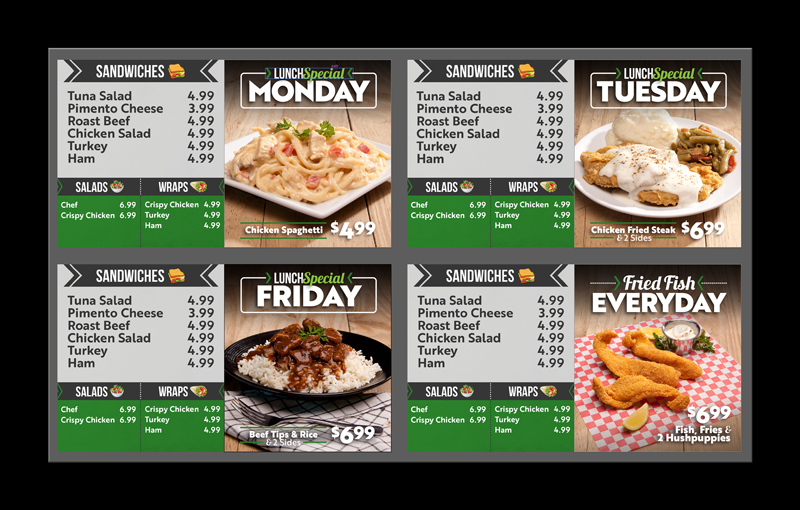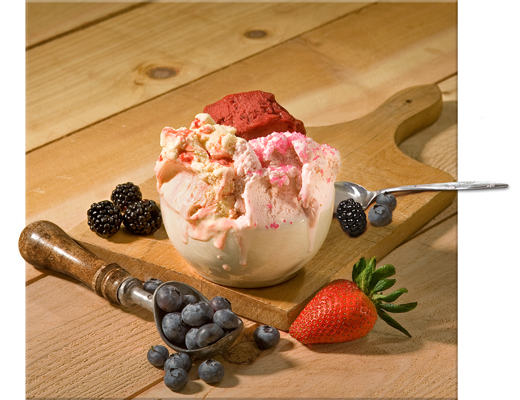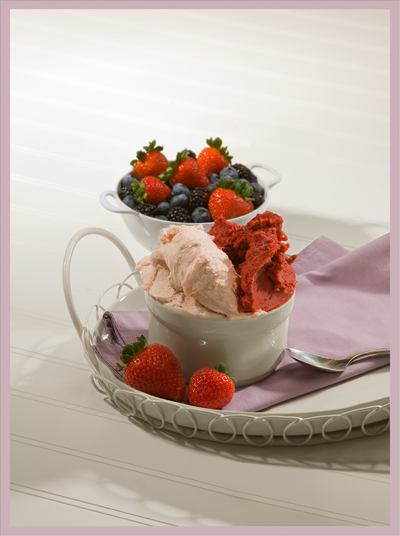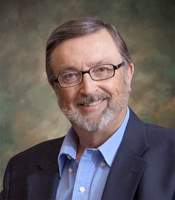by Bill Hedrick
It’s always been a mystery to me as to why experienced photographers who have mastered the art of lighting are so reluctant to photograph food or other table-top commercial products. If anything, it is much easier on the nerves than photographing a temperamental two-year-old. But, by the mid-1990’s, I could foresee some big changes ahead in the portrait and wedding market so I decided to incorporate more commercial photography into my current business.
The first step for me was taking a commercial photography course at the Texas School of Professional Photography. The instructor I chose that year was Joe Glyda. He was the chief photographer at that time for Kraft Foods. What I learned in that course was that lighting an inanimate object was not unlike lighting a human being. Lighting was still used to enhance and show texture and to shape a subject. If you already knew the basics of lighting a person, you were well on your way to lighting commercial products. But it was the simplicity of lighting table-top items that impressed me most of all.
 The method that Joe Glyda demonstrated to us was basically a large, soft light source from overhead with strategically-placed “kicker” lights coming in from behind on either side. He even used some reflectors and small mirrors for that purpose. If you think about it, you are essentially duplicating nature. The soft, overhead light simulates an open, overcast sky. Kicker lights accent the image and provide texture as well as luminosity.
The method that Joe Glyda demonstrated to us was basically a large, soft light source from overhead with strategically-placed “kicker” lights coming in from behind on either side. He even used some reflectors and small mirrors for that purpose. If you think about it, you are essentially duplicating nature. The soft, overhead light simulates an open, overcast sky. Kicker lights accent the image and provide texture as well as luminosity.
My lighting equipment consists of three PhotoGenic PowerLight 1250’s. They’ve been a dependable “work horse” for many years. Although a larger softbox would be nice, my 24×30 inch square box is more than adequate for the job. Over the years, I’ve modified my basic lighting setup, adding a honey-combed grid to each of the kicker lights for more precise control and using reflectors as needed to fill in some shadow detail as necessary. When necessary, the soft box can be moved forward or backward and tilt as needed to provide more light on the front of the object or more of a back light from behind. But, if you decide to use this type of lighting setup, you would be wise to purchase a heavy duty boom and stand. Having your lighting collapse onto a food display might not be good for your image.
 I shoot everything in RAW mode, along with a large JPEG. With the low cost and high capacity of flash cards today, it is a smart choice to shoot in RAW mode. My client receives a JPEG file that has been “tweaked” from the RAW file. When they open that JPEG and look at the histogram, they see a very nice JPEG that looks like it was shot right on the money the first time. If the client has a special request to adjust an image, I will go back to the original RAW file and give them a new file rather than throw away data on a JPEG.
I shoot everything in RAW mode, along with a large JPEG. With the low cost and high capacity of flash cards today, it is a smart choice to shoot in RAW mode. My client receives a JPEG file that has been “tweaked” from the RAW file. When they open that JPEG and look at the histogram, they see a very nice JPEG that looks like it was shot right on the money the first time. If the client has a special request to adjust an image, I will go back to the original RAW file and give them a new file rather than throw away data on a JPEG.
Very early on, I was told that the services of a Food Stylist can make or break a commercial food product assignment. A good food stylist will see tiny details in a product that you will never notice and, quite often, that can make all the difference in the world in the final results. Even so, I’ve never had the privilege of actually working with a Food Stylist myself. Instead, I’ve worked on several assignments with the owner of a local advertising agency who has some experience in that field. But he had a good understanding with the client that they were not paying for the services of a food stylist. Once he explained the additional cost of a Food Stylist, it became their decision not to use one.
Careful preparation and planning are major factors in a successful product shoot as well. If you are photographing for an agency, their art director will most likely have researched designs and will have made sketches of what he wants to achieve. Then, if he is the one arranging the product, your job is all that much easier. The more difficult assignment is one where there is no art director or if the art director has little or no experience with food products. In that case, it would be advisable to either do some careful planning with the art director ahead of time or do the research on your own. Just be sure the client is involved in the decision-making process.
 What I would not advise is to agree to such an assignment without some level of experience. A wise photographer taught me years ago that you are better off to refer a job to someone else if you are not prepared to do it right. Your reputation is not worth the risk. Even so, many photographers have forged ahead blindly and paid the price in the end after botching a job they should never have done to begin with.
What I would not advise is to agree to such an assignment without some level of experience. A wise photographer taught me years ago that you are better off to refer a job to someone else if you are not prepared to do it right. Your reputation is not worth the risk. Even so, many photographers have forged ahead blindly and paid the price in the end after botching a job they should never have done to begin with.
All of the food product assignments I’ve photographed over the years have been on location. They can’t bring their kitchen to your studio. In many cases, they will be scheduled during non-business hours. But, in some cases, we’ve had to work in a section of the dining room while customers were eating… and watching. Although this can be un-nerving for some photographers, I look at it as “free publicity” and an opportunity for me to demonstrate my own photographic skills.
I learned that lesson many years ago as a wedding photographer when I used to do the post-ceremony photographs after clearing the guests out of the building so they did not interfere with my job. However, one day I had a bride who insisted that she wanted the guests to remain inside during the photo shoot. So, to avoid confusion, I asked the minister to simply make an announcement as soon as the wedding party went out the front door for “everyone to remain seated for a short photo session.” To my amazement, this worked very well and the guests loved watching me in action. It was some of the best advertisement I ever received and continued to do that for many years.
Every product photographer has a few “tricks of the trade” and you will pick up your own along the way. I usually carry a small pump spray bottle of water to “spritz” things like vegetables and even some vegetable oil to provide a shiny, moist look where it is needed. A pair of tweezers and some toothpicks can also come in handy when working with small details in a shot. I even carry a bag of imitation fruit, vegetables, bread, cheese and other “knickknacks” that were purchased at a hobby-craft store. You never know when one will come in handy.
Another handy item to carry on food product assignments is a piece of 54 inch wide, off-white, vinyl fabric purchased at a fabric store. Along with some inexpensive spring clamps from the local hardware store, it comes in handy as a solid, sweeping, table-top background and cleans up easily if something is spilled on it and works much better than background paper for that same reason. Very often, an art director may want to clip out a background and this makes that job just a little easier.
One more important hint is to have an understanding with the cook or chef that he/she will need to prepare two of each item so that you can use the first one to nail down the lighting and arrangement before bringing out a “fresh” one for the final shot. Melted cheese does not photograph well after sitting for awhile and good ol’ Texas gravy takes on a glazed-over look after awhile.
Also, don’t be opposed to “using whatever is already there” in your photos. While some art directors prefer a solid-sweep background, one recent art director preferred the rustic table tops of the restaurant as a backdrop and the light fall-off in the background worked out perfectly for her final presentation.
Photographing table-top setups is not as complicated as you might think and it can be a refreshing change from what you might be doing now and it’s the type of assignment that not everyone is willing to attempt.
 Bill Hedrick, M.Photog.Cr., is a Past President of Texas PPA and the Editor of THE PHOTOGRAPHER since 1997. For the first 20 years of his career, Bill owned and operated a full-service studio in Kilgore, Texas, and became the first and only Master Photographer in Kilgore. During the 1990’s, he began transforming his photographic career to include more and more commercial photography. He is also a pilot and still does aerial photography from time to time. Retired from “people” photography, Bill concentrates primarily on commercial and industrial photographic assignments when he’s not performing his regular duties as Magazine Editor..
Bill Hedrick, M.Photog.Cr., is a Past President of Texas PPA and the Editor of THE PHOTOGRAPHER since 1997. For the first 20 years of his career, Bill owned and operated a full-service studio in Kilgore, Texas, and became the first and only Master Photographer in Kilgore. During the 1990’s, he began transforming his photographic career to include more and more commercial photography. He is also a pilot and still does aerial photography from time to time. Retired from “people” photography, Bill concentrates primarily on commercial and industrial photographic assignments when he’s not performing his regular duties as Magazine Editor..











